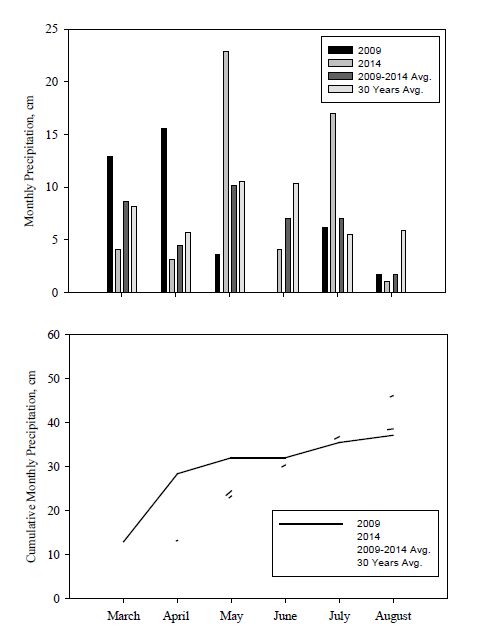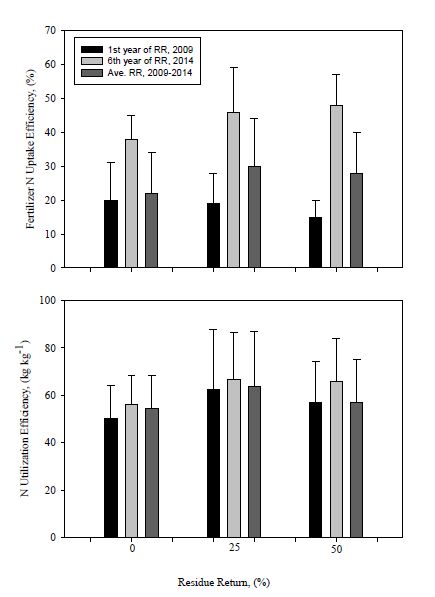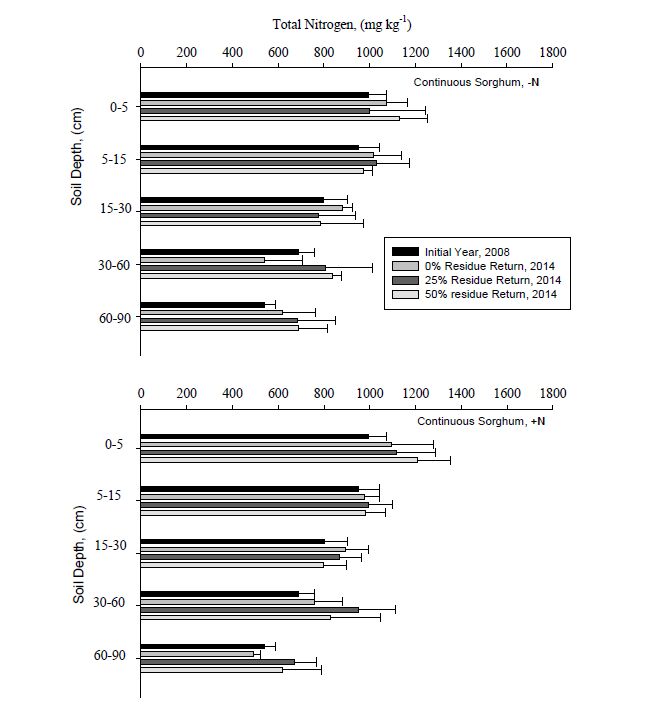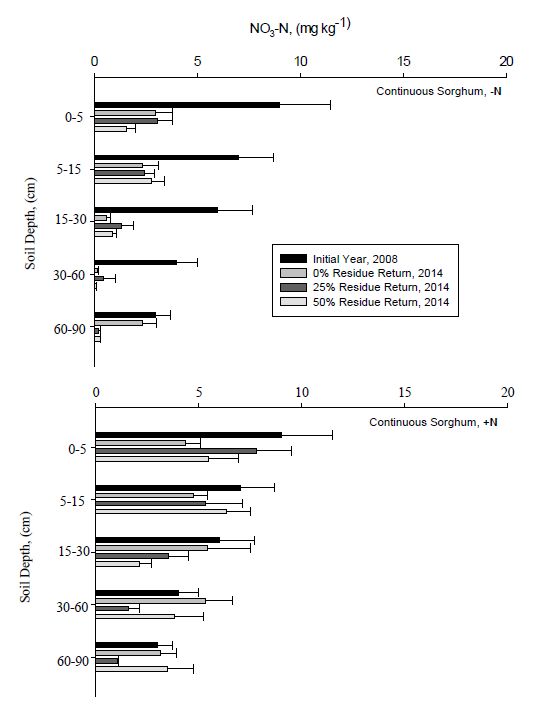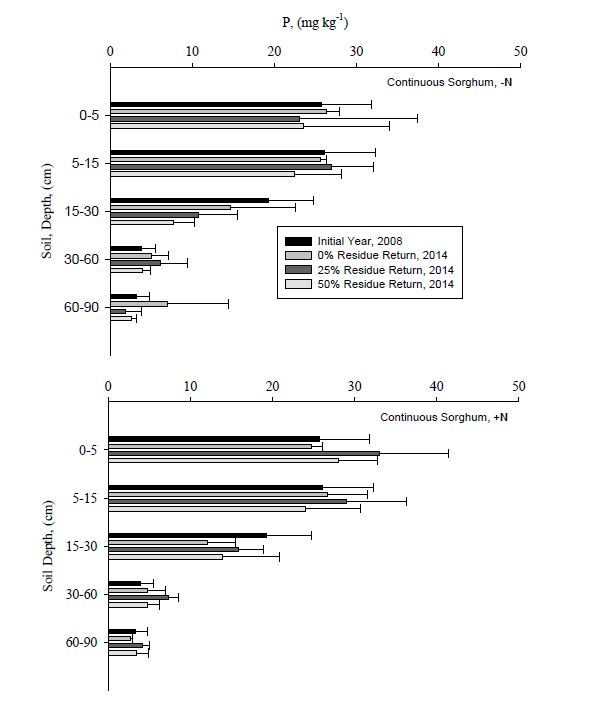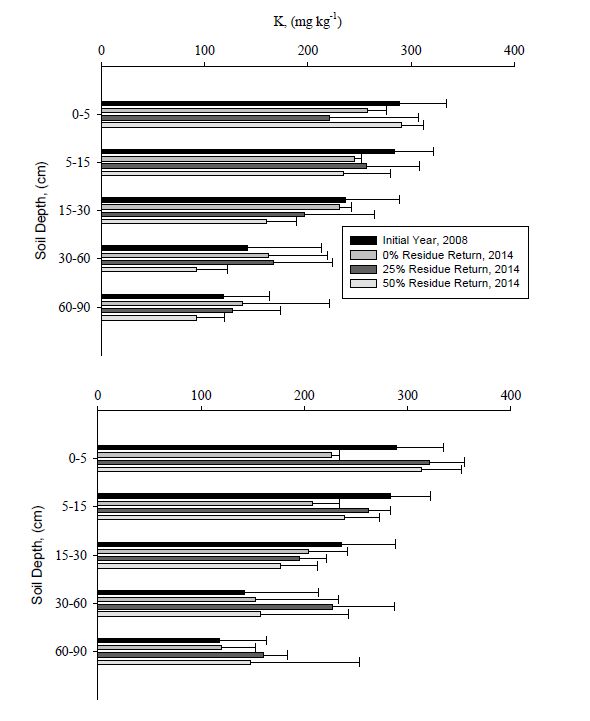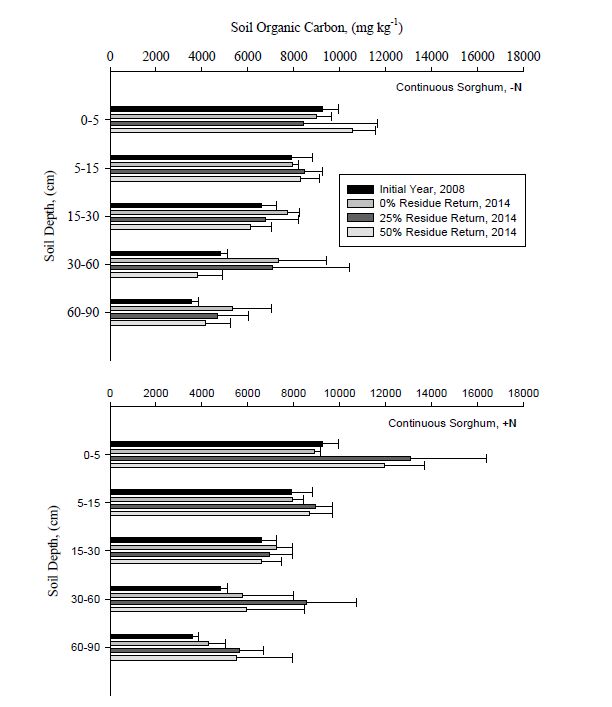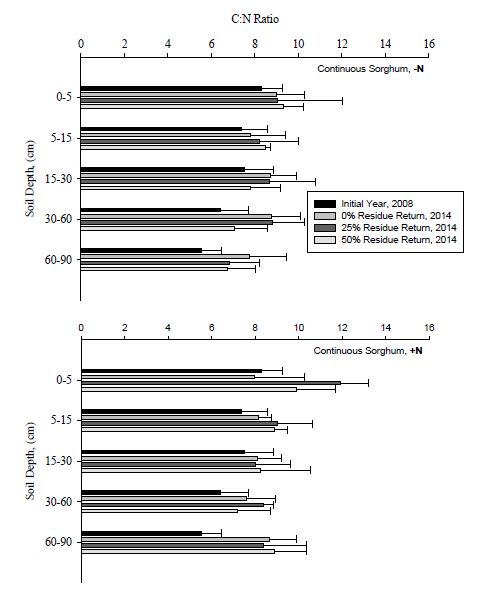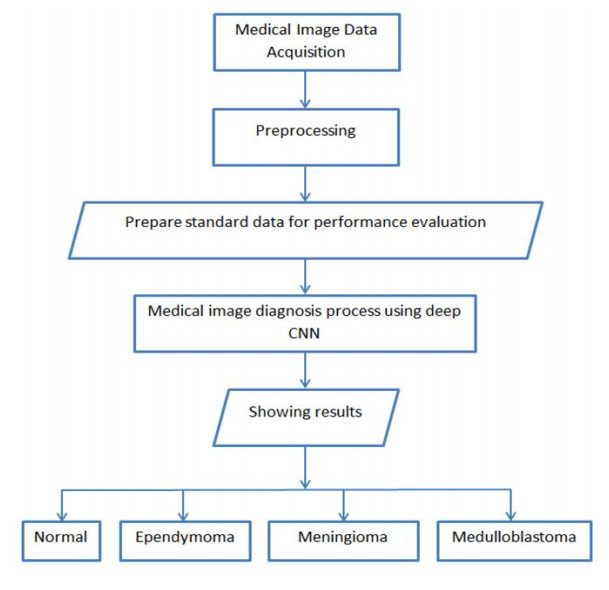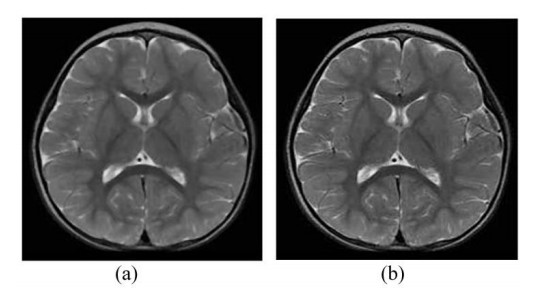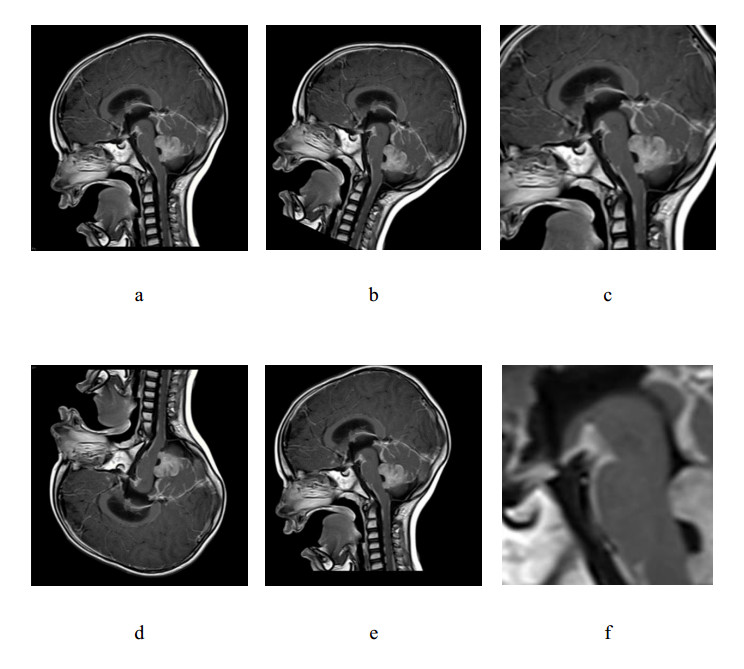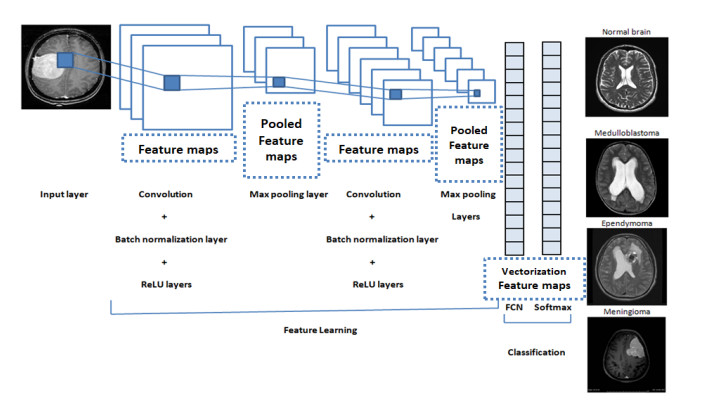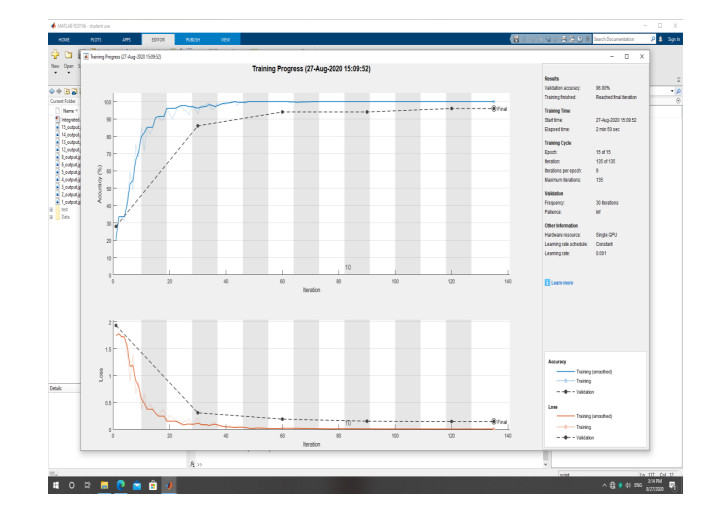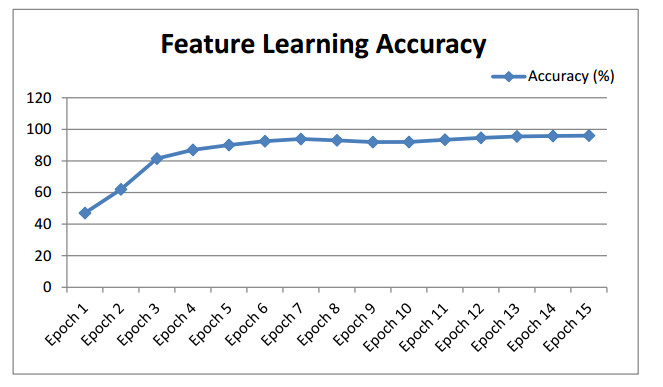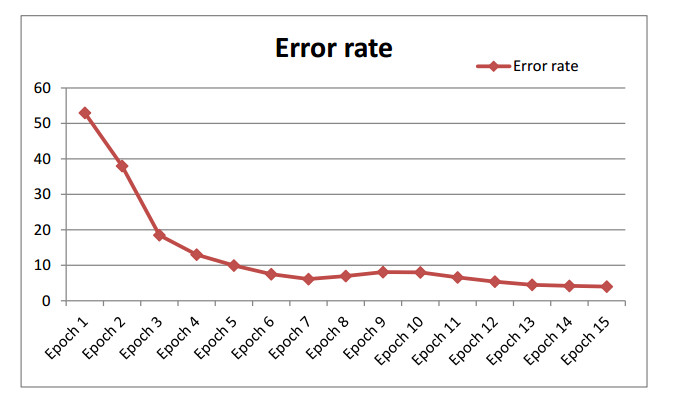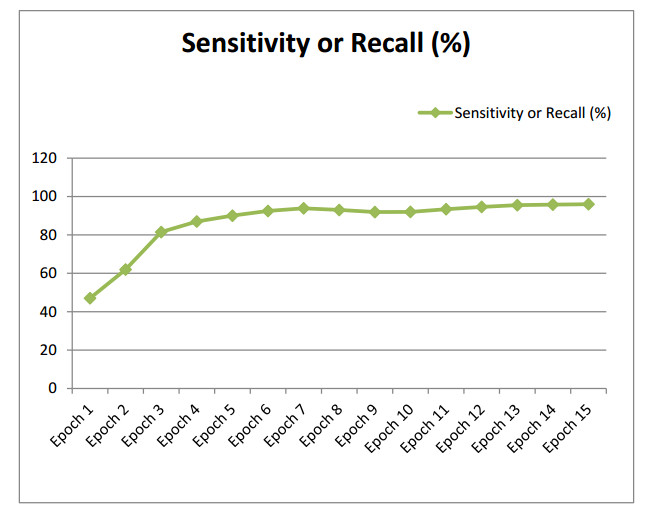1. Introduction
Biomass or bioenergy sorghum (Sorghum bicolor (L. ) Moench) is potentially an ideal feedstock for the cellulosic ethanol industry because it is an annual crop that is not utilized as a food source, can produce very high yields, has suitable biomass chemical compositional properties for fuel conversion, and requires relatively fewer inputs than many other bioenergy crops [1,2,3,4,5]. Biomass sorghums are able to accumulate large amounts of biomass in part because they are photoperiod sensitive (PS), meaning they do not flower when grown in long day (> 12 hr) environments of the temperate USA [6]. Sorghum can also produce large amounts of biomass with limited water [7]. The warm temperatures and moderate rainfall (> 750 mm) associated with climates in the southeastern and south central United States are well-suited for bioenergy sorghum production [3,4].
The Energy Independence and Security Act of 2007 mandated biofuel production of 136 billion liters per year by 2022. This quantity of biofuel will require an estimated 20 million hectares of cropland, greatly intensifying the need for sustainable agricultural systems [8]. Bioenergy sorghum potentially is a good feedstock candidate for the biofuel energy industry, but management information for the crop is still limited. Currently, most management practices for energy sorghum production are based on interpolations from forage, grain and sweet sorghum production guidelines [1,9,10,11,12].
Information on the response of bioenergy sorghum to N fertilizer in conjunction with other management factors is slowly accumulating. Biomass sorghum is a novel second-generation crop, and is distinctly different in growth habit compared to either grain or forage sorghums [4]. With long vegetative growth phases, energy sorghum hybrids were found to accumulate more than twice as much biomass as grain sorghum, owing to an extended growing period, greater light interception, and higher radiation use efficiency [13]. Because of greater yields, biomass sorghum may also remove more nutrients compared to other perennial biofuel feedstocks [14]. Biomass sorghum does have a lower N requirement for optimum above ground dry matter production than grain crops like corn (Zea mays L. ) [9,15,16,17]. Maughan et al. [18] observed responses up to 150 kg N ha−1 in 2009 and 224 kg N ha−1 in 2010 for energy sorghum in southern Illinois. However, Wortmann et al. [19] showed sorghum had little response to N fertilizer after one year of cropping. Powell and Hons [11] suggested that a fertilizer N application rate of 112 kg ha−1 was generally sufficient to produce maximum yield and attain the greatest FNUE (fertilizer N uptake efficiency). Marsalis and Bean [10] indicated that in irrigated environments with high yield potentials, N application as high as 269 kg N ha−1 may be needed, while little to no N fertilizer may be required under dryland conditions.
Recently, Hao et al. [20] determined that optimal N fertilizer rates for yield and efficiency for PS sorghums in the Texas High Plains were 183 and 78 kg N kg−1, respectively, in 2010, and 148 and 90 kg Nha−1 in 2011. Therefore, it is likely that energy sorghum will have a significant demand for N due to high biomass yield. Bioenergy sorghum exhibits efficient N recycling and preferential accumulation of stem biomass with low nitrogen content [13]. Nitrogen fertilizer represents a significant energy input for crop production, and over-application can result in non-point source pollution [21].
Long-term production of bioenergy crops, however, may adversely impact soil fertility, soil quality, and their major determinants [22]. In biofuel feedstock production, most above-ground dry matter is harvested, and little plant material is returned for organic C and nutrient cycling. Maintaining soil organic C (SOC) through harvest strategies that return a portion of the residue is considered vital for maintaining soil productivity [23]. Cadoux et al. [14] stated that long-term high biomass production and harvest of dedicated bioenergy crops must be sustainable with low environmental impacts in order to be viable. Therefore, bioenergy crop production might only be considered sustainable when decreases in SOC and stocks of available nutrients are prevented [22].
Return of harvested residues contributes soil nutrients and SOC. For example, Karlen et al. [24] calculated that return of corn stover on average contributed 29, 3, and 24 kg ha−1 of N, P and K, respectively, to soils. Power et al. [25] found in a ten-year study that a corn-sorghum rotation with residue returned annually added about 10 and 4 kg ha−1of N and P, respectively. Powell and Hons [11] found stover removal adversely affected yields, nutrient uptake and partitioning. But the question remains how much residue must be returned to soil to maintain SOC and its vital functions? Meki et al. [26] in a modeling study of biomass sorghum harvest thresholds in a no-till system concluded that 75% biomass removal would be feasible for maintaining SOC. However, the authors also concluded that 75% biomass removal would likely increase soil bulk density and recommended that the removal threshold should be reduced to 50%. Johnson et al. [27] tried to empirically estimate the minimum residue return rate required to sustain SOC with corn production. Based on published data, they suggested about 6 Mg stover ha−1 yr−1 was needed to maintain SOC levels. Wilhelm et al. [28,29] concluded that residue removal rates must be based on soil productivity, climate, and cultural practices.
In quantifying the effects of residue return or removal on soils, most studies have focused on SOC and N dynamics [30]. Long-term experiments with repeated additions or removal of C sources are preferred for examining SOC changes [30] and have provided insights into SOC dynamics and turnover under a range of agricultural crops and management practices. Clapp et al. [31] examined the complex interactions between stover harvest, N fertilization, and SOC dynamics in a 13-year experiment in Minnesota, and found changes in SOC at 0 to 30 cm depth in response to treatments. Where corn stover was removed, SOC remained nearly unchanged with time, but increased about 14% where stover was returned. These authors also reported that removing stover and adding N fertilizer increased the decomposition of relic, or more resistant, SOC that is critical for maintenance of soil structure and C sequestration. In contrast, returning stover and adding N actually slowed decomposition. Khan et al. [32] also showed that fertilizer N promoted the decomposition of crop residues and soil organic matter, especially in subsurface soil, and suggested that current fertilizer management practices, if combined with corn stover removal for bioenergy production, could exacerbate SOC loss. However, N fertilizer is generally perceived to help sequester SOC by increasing the input of crop residue, and often results in an overall improvement in soil quality and fertility.
In any case, research on returning any amount of harvested biomass to soil based on soil productivity, soil C and N dynamics, or climate and cultural practices, should also consider the reality of economic profitability and feasibility of feedstock production for the bioenergy industry as this sector depends on a consistent volume of delivered biomass feedstock. The estimated cost of biomass from sorghum as a model annual energy crop was higher than for perennial energy crops [6]. Amatya et al. [33] using a stochastic economic simulation model developed and used for bioenergy sorghum suggested that in order for biomass sorghum to be profitable, applying a non-limiting amount of N and harvesting all biomass is essential. However, long-term effects of such a scenario have not currently been quantified. In our experiment, the primary objective was to determine the effects of N fertilization and biomass return on long-term biomass yield and soil quality in a continuous biomass sorghum system.
2. Materials and Method
2.1. Site description and experimental design
The experimental site was located at the Texas A&M Agrilife Research Farm, approximately 8 km southwest of College Station, TX (30°3'15ʺ N lat; 96°25ʹ37ʺ W long), which is situated within the Brazos River floodplain in south-central Texas. The soil used was a calcareous (pH 8. 2) Weswood silty clay loam (fine-silty, mixed, superactive, thermic UdifluventicHaplustept), with particle size distribution of 100, 560, and 340 g kg−1 of sand, silt, and clay, respectively, in the top 15 cm of soil. Climate at the site is classified as humid subtropical, with mean annual precipitation of 1017 mm and mean annual temperature of 20°C. Before the start of the bioenergy sorghum study in 2008, the field was in cotton (Gossypiumhirsutum (L. )) in 2007 and had been rotated annually with corn under conventional disk tillage for the previous ten years. Soil nutrient properties at the initiation of the study and detailed field management practices performed were reported by Wight et al. [34]. The study soil initially rated very low for extractable NO3-N, moderate for P, and high for K, Ca and Mg [34].
The experimental design was a randomized complete block with two N rates (0 and 280 kg N ha−1), three levels of residue (biomass) return (0, 25% and 50%), and four replications. An additional nutrient return treatment received 280 kg N ha−1 and complete residue removal at harvest and was also replicated four times. Biomass yield from this treatment was determined each year, and was subsequently analyzed for total concentrations of P, K, Ca, Mg, Fe, Mn, Zn and Cu as described below. The amounts of these elements removed annually were subsequently returned to these treatment plots in inorganic form prior to the next growing season. The study utilized four row plots (1. 02m row centers) measuring 9. 14 m long and 4. 08 m wide. The bioenergy sorghum cultivar used, “4Ever Green, ” was a PS, high-yielding hybrid forage sorghum (Walter Moss Seed Co, Waco, TX). Field management practices were performed as described by Wight et al. [34]. Limited furrow irrigation was used to prevent severe water stress. Treatments receiving N fertilization were side-dressed at approximately the four-leaf stage with subsurface banded granular urea. Sorghum harvest was performed with a silage harvester with an attached weigh-bucket and scale, and usually occurred in September each year. Biomass yield was estimated from the entire length of the middle two rows of each plot, and a random grab sample of chopped residue was captured for determining moisture and nutrient composition. The harvester chopped sorghum biomass into approximately 2 cm by 2 cm pieces. To physically simulate harvest strategies that would return 25% or 50% of the crop residue to help sustain nutrient balance, soil organic matter, and other indicators of soil quality, biomass harvested from the middle one or two rows wa
s evenly distributed across the area of the entire plot. All treatments were imposed in 2008 and continued annually through 2014.
2.2. Soil sampling and analysis
Composite soil samples for each depth increment and treatment were collected using three, 3. 8cm diameter soil cores at 0-5, 5-15, 15-30, 30-60, and 60-90 cm taken prior to each growing season in late March or early April from 2009-2014. Samples were oven dried at 60°C for 7 days, ground using a flail grinder and sieved to pass through a 1. 75mm mesh screen. Residual soil inorganic nitrate-N was extracted (10:1 solution:soil) with 1 M KCl solution, reduced to nitrite using a cadmium column, and analyzed using spectrophotometric methods [35]. Extractable soil nutrients including P, K, Ca, Mg and S were extracted using a method adapted from Mehlich [36] and measured by inductively coupled plasma spectroscopy (ICP). A subsample of each composite soil sample was also finely ground with a puck-and-ring grinder and analyzed for organic and inorganic C and total N by combustion[37,38,39] using an Elementar Americas Inc, VarioMAX CN analyzer (Mt. Laurel, NJ, U. S. A. ). Differential heating was used to separate inorganic and organic C. For organic C, the primary furnace was set at 650 °C with a 2 L min−1 O2 flow rate. Total N and C were analyzed with the same instrument at 900 °C [40,41].
2.3. Plant sampling and analysis
Sorghum was planted at a seeding density of 65, 000 seed ha−1in late March or early April each year using a four-row planter (Case IH). The biomass was harvested using a New Holland model 707U forage chopper (New Holland, PA, USA) that resulted in 18. 65 m2 of field area for determination of each plot yield. Approximately 600 g of chopped plant material was taken as a subsample and immediately weighed. Subsamples then were oven dried at 60°C until stable weights were attained.
Dried plant samples were initially ground to pass a 1mm sieve and then powdered in a ring and puck mill prior to total elemental analysis for C and N by combustion [38] using an Elementar Americas, Inc, CNS Analyzer (Mt. Laurel, NJ). Total P, K, Ca, Mg, Fe, Mn, Zn and Cu concentrations were determined after nitric acid digestion [42] using a Spectro Arcos ICP (Kleve, Deutschland). Total accumulation of each element in aerial biomass was calculated as dry yield x total elemental concentration.
Fertilizer N uptake efficiency (FNUE) [11] and N utilization efficiency (NUE) [20] were also determined. To quantify the effect of residue return on FNUE, the amounts of N removed at various residue return rates were used (Table 3). FNUE was calculated for each rate of residue removal using the equation: %FNUE = [(A−B)/C] × 100, where A is total N uptake by above-ground dry biomass receiving fertilizer N, B is the total N uptake by dry biomass with no added N, and C is quantity of added fertilizer N (280 kg N ha−1 year−1). Values are expressed as a percentage of added fertilizer N. Nitrogen utilization efficiency was also calculated following the approach of Hao et al. [20] where: NUE = Biomass yield, kg ha−1/N supply, where N supply is added fertilizer N plus soil NO3-N to 90 cm depth at the start of the growing season. Soil NO3-N content in each depth increment was calculated as NO3-N concentration × soil bulk density which was estimated from measured SOC [43].
2.4. Statistical analysis
The effects of N fertilization, biomass return, and their interactions on biomass yield and plant and soil properties were tested using PROC Mixed in SAS 9.2 [44]. All differences discussed are significant at the P ≤ 0. 05 probability level. A least significant difference (LSD) was calculated if overall treatment significance (P < 0. 05) was established using ANOVA.
3. Results and Discussion
3.1. Nitrogen fertilization and residue return effects on yield of bioenergy sorghum
Nitrogen fertilization significantly increased sorghum biomass yield (Figure 1), but the rate of increase was influenced by the amount of residue returned to soil. Returning residue had no significant effect on biomass yield when sorghum was not fertilized with N. In fact, even with 50% residue return each year, biomass yield in 2014 was reduced by more than 35% compared to 2009. Cumulative growing season precipitation was similar in 2009 and 2014 through June, but July 2014 was much wetter than normal (Figure 2). Averaged across rates of residue return with no N fertilization, biomass yield reductions were 7%, 39%, and 26% for the 1st, 6th and six-year average, respectively, compared to 2008. Therefore, without N fertilization, returning up to 50% of harvested biomass to soil was not able to maintain biomass production in either the short- or long-term, and yields decreased with time.
With N fertilization and 100% biomass removal, yields increased by 45 and 102% in the 1st and 6th years compared to no N addition, and about 43% for the six-year average. With residue return, yields increased by 1 to 20% depending upon the rate of removal and length of time (Figure 1). Doran et al. [45] in a study with grain sorghum reported that residue return or removal did not affect grain yield. In our experiment, the highest biomass yields were obtained with 25% residue return during the 1st (2009) and 6th (2014) years, averaging approximately 22. 8 and 21. 2 Mg ha−1, respectively. This increase was approximately 15% (19. 8 to 22. 8 Mg ha−1) in 2009 and 16% (18. 2 to 21. 2 Mg ha−1) in 2014 compared to no residue return. The percentage of yield increase with 50% residue return for the 1st and 6th years of cropping ranged from < 1 to 10%, respectively. Averaged for the six years, 25 and 50% residue return increased yield about 20% (15. 9 to 19. 5 Mg ha−1) and 14% (15. 9 to 18. 1 Mg ha−1), respectively, with N fertilization when compared to no residue return (Figure 1).
Nitrogen fertilization appeared to be essential for both short- and long-term biomass sorghum production (Figure 1). Residue return in conjunction with a non-limiting rate of N fertilization may have contributed to higher sorghum yield by improving soil chemical properties via nutrient cycling or physical properties by influencing soil moisture, temperature, and aeration [25,46]. Low to moderate soil nutrient availability was observed in our soil immediately prior to initiation of this study for N and P (Table 1). Residual soil NO3-N was about 60 kg ha−1when summed to 90 cm depth. Low to moderate amounts of nutrients might be rapidly mined by continuous biomass sorghum production, resulting in reduced soil fertility and subsequent crop yield. The average quantity of nutrients removed in biomass over the six-year period that were added back in the nutrient return treatment are shown in Table 2, with K removal far exceeding the other nutrients. The yield response of biomass sorghum to the nutrient return treatment is shown in Figure 1. Dry biomass yields for this treatment were 20. 4, 22. 1, and 19. 1 Mg ha−1for the 1st, 6th, and the six-year average, respectively, which corresponded to 3%, 22%, and 23% greater yield than the treatment receiving N fertilization and no residue or nutrient return. Greater response in following years may have been associated with diminished nutrient availability with continuous biomass sorghum production. However, the extra treatment with increased nutrient applications had comparable yields to the 25% or 50% residue treatments with only N fertilization. For example, in the 6th year (2014), biomass yield for the supplemental nutrient treatment averaged 22. 1 Mg ha−1, while the 25% and 50% residue return treatments averaged 21. 2 and 20. 9 Mg ha−1, respectively. The six-year average biomass yield for the supplemental nutrient treatment was 19. 1 Mg ha−1, while for 25% residue return treatment, yields averaged 20. 1 Mg ha−1. The relatively small difference in biomass yield with N fertilization between supplemental nutrient vs residue return treatments implied that residue return with non-limiting N could potentially replace via nutrient cycling part of the nutrients removed in harvest.
Table 1. Soil nutrient concentrations to 90 cm depth sampled in spring 2008 prior to study initiation.
| Soil depth |
Soil Nutrient Concentrations |
| cm |
TN* |
NO3–N |
P |
K |
Ca |
Mg |
OC |
C:N |
|
|
___________________mg kg−1___________________ |
g kg−1 |
|
| 0–5 |
1006 |
7 |
26 |
265 |
6747 |
271 |
9. 5 |
9 |
| 5–15 |
944 |
6 |
26 |
238 |
6336 |
268 |
8. 1 |
8 |
| 15–30 |
782 |
6 |
16 |
184 |
7926 |
271 |
6. 8 |
8 |
| 30–60 |
593 |
5 |
4 |
130 |
12259 |
247 |
4. 9 |
7 |
| 60–90 |
563 |
4 |
4 |
105 |
10565 |
254 |
3. 7 |
7 |
| *TN and OC denote soil total N and organic C, respectively. |
Table 2. Average amounts of nutrients taken up annually over the six-year study period by biomass sorghum in the nutrient return treatment and applied via inorganic fertilization prior to the next growing season.
|
Nutrients Applied (kg ha−1)
|
|
P
|
K
|
Ca
|
Mg
|
Zn
|
Fe
|
Cu
|
Mn
|
|
10
|
174
|
50
|
19
|
0. 4
|
3
|
0. 1
|
0. 2
|
With non-limiting N and complete biomass removal, the average six-year continuous sorghum biomass yield was approximately 16 Mg ha−1, which was about 3 and 2 Mg ha−1 lower than that with 0% residue return in 2009 and 2014, respectively. With residue return, the difference between the six-year average and 2009 and 2014 yields was 6 to 7 Mg ha−1. The significantly lower six-year average yield may be related to variable growing season precipitation during this period. Highest yields were obtained in 2009 and 2014 when above average rainfall was received during sorghum’s active growth period (Figure 2). Several years of moderate to severe drought occurred in the 6 years of this study, but were somewhat moderated by limited irrigation. Hao et al. [20] also reported a positive relationship between increased precipitation and bioenergy sorghum response to N fertilization and observed that the amount and frequency of rainfall significantly impacted biomass sorghum production. These authors found that total biomass accumulation by bioenergy sorghum hybrids grown without irrigation was reduced by 50% or more compared with irrigated controls, depending on the timing, duration, and extent of water deficit. In our experiment, the average growing season precipitation for 2009-2014 did not deviate much from the 30-year average, but did tend to be lower in June and August (Figure 2).
In general, the yields obtained in our experiment were comparable to many of those reported for Texas. Hao et al. [20] reported that biomass yield ranged from 15 to 23 Mg ha−1, from 11 to 18 Mg ha−1, and from 8 to 13 Mg ha−1, respectively, for full and limited irrigation and dryland treatments in the Southern High Plains of Texas. McCollum et al. [47] reported that the yield of PS forage sorghum could reach 24 Mg ha−1at Bushland, TX, while Tamang et al. [16] obtained average dry matter yields of 13 Mg ha−1 for 2008 and 2009 at Lubbock, TX. Other reports from several US sorghum producing regions indicate even higher yields for bioenergy sorghum. Maughan et al. [18] reported a maximum biomass yield of 30. 1 Mg ha−1. Miller and McBee [2] reported a yield of 31. 9 Mg ha−1, while Olson et al. [48] reported dry biomass yields of 40 to 50 Mg ha−1 for first generation sorghum hybrids grown in small irrigated plots and 15 to 25 Mg ha−1 under non-irrigated conditions.
3.2. Nitrogen fertilization and residue return effects on nutrient removal and efficiency
The influence of N fertilization and residue return on biomass nutrient concentration and uptake after 1 and 6 years of treatment is shown in Table 3. Nitrogen, P, and K removal rates in 2009 with no added N averaged across biomass return rates were 113, 15, and 164 kg ha−1, respectively. In 2014 after 6 years of continuous sorghum cropping, the amounts of N, P, and K removal by these same treatments were reduced by 44%, 53% and 25%, respectively. Decreasing available soil N without fertilizer addition resulted in lower nutrient uptake due to reduced biomass yield and N and P concentrations in harvested biomass (Figure 1 and Table 3). With N fertilization, N, P, and K uptake was similar or slightly increased between the 1st and 6th years due to higher yield and/or nutrient concentrations in harvested biomass (Figure 1 and Table 3). For example, N, P, and K removals averaged across all rates of residue return were increased more than two-fold with N fertilization in 2014 compared to no N application (Table 3). The greatest nutrient uptake occurred in treatments producing the highest biomass yield, with the highest yield being achieved with N fertilization and 25% biomass return (Figure 1). With this treatment, N, P, and K contents in biomass were 173, 19, and 318 kg ha−1, respectively, in 2009 and 192, 20, and 344 kg ha−1 in 2014 (Table 3).
Table 3. Influence of N fertilization and residue return on biomass N, P, and K concentrations and uptake by biomass sorghum in 2009 and 2014 after 1or 6 years of treatment imposition.
| Fertilization |
Residue |
Nutrient Concentration, g kg-1 and Uptake*, kg ha-1 |
| return |
|
|
(2009) |
(2014) |
|
|
________________________ |
________________________ |
|
|
N |
P |
K |
N |
P |
K |
| -N |
0 |
7. 5 (114)* |
1. 0 (15) |
11. 9 (164) |
7. 3 (63) |
0. 9 (8) |
15. 6 (125) |
| -N |
25 |
8. 0 (121) |
1. 2 (17) |
12. 4 (180) |
7. 0 (62) |
0. 8 (7) |
13. 8 (120) |
| -N |
50 |
7. 7 (105) |
1. 0 (12) |
11. 8 (149) |
7. 1 (65) |
0. 7 (7) |
13. 9 (125) |
| LSD 0. 05 |
|
NS NS |
NSNS |
NSNS |
NSNS |
NSNS |
NSNS |
| Average |
|
7. 7 (113) |
1. 0 (15) |
12. 0 (164) |
7. 1 (63) |
0. 8 (7) |
14. 4 (123) |
|
|
|
|
|
|
|
|
| +N |
0 |
8. 6 (171) |
1. 0 (20) |
11. 8 (233) |
9. 7 (178) |
0. 7 (17) |
11. 6 (211) |
| +N |
25 |
8. 9 (173) |
0. 9 (19) |
14. 4 (318) |
9. 1 (192) |
0. 9 (20) |
14. 2 (344) |
| +N |
50 |
7. 7 (148) |
0. 9 (16) |
11. 7 (223) |
9. 4 (195) |
0. 7 (18) |
12. 9 (274) |
| +N (nutrients) |
0 |
8. 5 (156) |
1. 0 (19) |
13. 8 (253) |
10. 4 (229) |
1. 1 (26) |
16. 5 (365) |
| LSD 0. 05 |
|
NS NS |
NSNS |
NS56 |
NSNS |
NSNS |
NS79 |
| Average |
|
8. 4 (164) |
0. 9 (18) |
12. 6 (258) |
9. 3 (188) |
0. 8 (18) |
12. 9 (276) |
*Values in parentheses are nutrient uptake.
NS indicates non-significant at P < 0. 05. |
Fertilizer N uptake efficiency (FNUE) [11] and N utilization efficiency (NUE) [20] were also determined in this experiment. FNUE of biomass sorghum at different residue return rates are presented for the 1st, 6th, and the average for the six study years (Figure 3). FNUE was lowest in 2009, presumably because of higher residual soil N. FNUE in 2009 tended to decrease with increasing residue return, probably because of N immobilization. By 2014, FNUE had increased dramatically for all treatments, but especially those with residue return. FNUE averaged over the 6 years for 0% biomass return was only slightly higher than that recorded in 2009, while the average values for 25% and 50% return were higher than those observed initially. The long-term average FNUE was increased by 36 and 27% with 25 and 50% biomass return compared with complete biomass removal (Figure 3). Similar results were reported for forage sorghum varieties by Powell and Hons [11].
NUE varied little with time within biomass return rate, but tended to be greater with biomass return (Figure 3). Lowest NUE (50 to 56 kg biomass kg N−1) was observed with no residue return, while the highest (63 to 67 kg biomass kg N−1) was achieved with 25% residue return. The NUE values calculated in our experiment were lower than those reported by Hao et al. [20] in their Texas Southern High Plains experiment. They reported NUE values of 78 to 90 kg biomass kg N−1 with total available N of 183 and 148 kg ha−1, and biomass yields of 12 to 18 Mg ha−1.
3.3. Nitrogen fertilization and residue return effects on changes in soil properties
The effect of residue return under non-limiting N fertilization on soil chemical properties to 90 cm depth for years 2009 and 2014 are shown in Table 4 and 5, respectively. Residue return did not influence soil TN concentrations at any depth increment in 2009 and only at 60-90 cm in 2014, but it significantly affected NO3-N concentration in top soil (0-5 cm) both years, and P, K, and SOC concentrations and the C:N ratio of soil in 2014. Residue returned at 25% significantly increased residual NO3-N concentration in 2009 by more than 50% in the top 5cm of soil (Tables 1 and 4), with this N potentially being available for the next sorghum crop. Increased soil NO3-N at 0-5 cm was also observed with 25% residue return in 2014 after 6 years of sorghum cropping (Table 5). No differences in NO3-N concentrations were observed at other depths. Sindelar et al. [49] reported residual soil NO3-N to a depth of 1.2 m was 16 kg ha−1 greater with corn stover removal and fertilizer addition of 224 kg N ha−1, suggesting slightly different N management may be needed when stover is removed in continuous corn production.
Table 4. Effect of residue return under non-limiting N on soil chemical properties to 90 cm depth in 2009 after one year of bioenergy sorghum production.
| Residue Return |
TN |
NO3–N |
P |
K |
Ca |
Mg |
OC |
C:N |
|
|
------------------------------mg kg-1--------------------------- |
g kg-1 |
|
|
|
|
0-5 cm depth |
|
|
|
| 0 |
1202 |
5.6 |
25.9 |
325 |
6992 |
320 |
9.5 |
8.2 |
| 25 |
1230 |
12.4 |
30.1 |
323 |
6674 |
298 |
10.1 |
8.3 |
| 50 |
1203 |
6. 5 |
26. 3 |
378 |
6769 |
306 |
11.9 |
9.3 |
| LSD 0.05* |
NS |
3.1 |
NS |
NS |
NS |
NS |
NS |
NS |
|
|
|
5-15 cm depth |
|
|
|
| 0 |
1076 |
7.1 |
25.4 |
277 |
7933 |
309 |
8.5 |
7.9 |
| 25 |
1152 |
7.8 |
25.9 |
215 |
7138 |
282 |
7.6 |
6.8 |
| 50 |
1207 |
5.5 |
22.8 |
222 |
7166 |
279 |
8.6 |
7.2 |
| LSD 0.05 |
NS |
NS |
NS |
NS |
NS |
NS |
NS |
NS |
|
|
|
15-30 cm depth |
|
|
|
| 0 |
946 |
6.1 |
16.9 |
216 |
9046 |
321 |
7 |
7.5 |
| 25 |
1068 |
5.2 |
16.6 |
205 |
8790 |
315 |
7.2 |
6.8 |
| 50 |
933 |
6.7 |
13.1 |
188 |
8501 |
293 |
7.2 |
8.2 |
| LSD 0.05 |
NS |
NS |
NS |
NS |
NS |
NS |
NS |
NS |
|
|
|
30-60 cm depth |
|
|
|
| 0 |
742 |
4.6 |
4.1 |
149 |
10638 |
274 |
4.8 |
6.6 |
| 25 |
904 |
3.9 |
5.6 |
198 |
10046 |
317 |
7 |
5.6 |
| 50 |
790 |
4.8 |
3 |
126 |
11820 |
248 |
5.1 |
6.5 |
| LSD 0.05 |
NS |
NS |
NS |
45 |
NS |
NS |
NS |
NS |
|
|
|
60-90 cm depth |
|
|
|
| 0 |
608 |
3.8 |
3.3 |
109 |
13215 |
271 |
3.2 |
5.4 |
| 25 |
828 |
3.6 |
3.7 |
119 |
10730 |
238 |
4.3 |
5.4 |
| 50 |
667 |
4 |
2.3 |
106 |
12967 |
271 |
3.9 |
5.9 |
| LSD 0.05 |
NS |
NS |
NS |
NS |
NS |
NS |
NS |
NS |
| *LSD = Least significant difference, NS = not significant, TN = total N, OC = organic C. |
| Fertilizer N added at 280 kg N ha-1. |
Table 5. Effect of residue return under non-limiting N on soil chemical properties to 90 cm depth in 2014 after 6 years of continuous bioenergy sorghum production.
| Residue Return |
TN |
NO3–N |
P |
K |
Ca |
Mg |
OC |
C:N |
|
------------------------------mg kg-1--------------------------- |
g kg-1 |
|
|
|
|
0-5 cm depth |
|
|
|
| 0 |
1095 |
4.4 |
24.7 |
226 |
5832 |
244 |
8.9 |
8 |
| 25 |
1115 |
7.8 |
33 |
312 |
5939 |
263 |
13.1 |
12 |
| 50 |
1209 |
5.5 |
28 |
314 |
6073 |
291 |
12 |
10 |
| LSD 0.05* |
NS |
1.6 |
4.8 |
78 |
NS |
NS |
2.6 |
2.2 |
|
|
|
5-15 cm depth |
|
|
|
| 0 |
975 |
4.8 |
26.8 |
208 |
6130 |
245 |
7.9 |
8.1 |
| 25 |
993 |
5.3 |
29 |
243 |
6317 |
264 |
9 |
9 |
| 50 |
979 |
6.3 |
24 |
239 |
6296 |
256 |
8.7 |
8.9 |
| LSD 0.05 |
NS |
NS |
NS |
NS |
NS |
NS |
NS |
NS |
|
|
|
15-30 cm depth |
|
|
|
| 0 |
892 |
5.4 |
12.1 |
204 |
7760 |
251 |
7.3 |
8.2 |
| 25 |
870 |
3.5 |
16 |
189 |
7206 |
249 |
7 |
8 |
| 50 |
800 |
2.1 |
14 |
177 |
6609 |
220 |
6.6 |
8.2 |
| LSD 0.05 |
NS |
NS |
NS |
NS |
NS |
NS |
NS |
NS |
|
|
|
30-60 cm depth |
|
|
|
| 0 |
758 |
5.3 |
4.7 |
152 |
10913 |
223 |
5.8 |
7.7 |
| 25 |
950 |
2.3 |
7 |
237 |
9298 |
304 |
8.5 |
8.9 |
| 50 |
827 |
3.8 |
4.8 |
158 |
9232 |
232 |
6 |
7.3 |
| LSD 0.05 |
NS |
NS |
NS |
45 |
NS |
79 |
NS |
NS |
|
|
|
60-90 cm depth |
|
|
|
| 0 |
493 |
3.1 |
2.7 |
120 |
12573 |
229 |
4.3 |
8.7 |
| 25 |
672 |
2 |
4 |
161 |
10431 |
229 |
5.6 |
8.3 |
| 50 |
618 |
3.5 |
3.4 |
148 |
11056 |
268 |
5.5 |
8.9 |
| LSD 0.05 |
165 |
NS |
NS |
38 |
NS |
NS |
NS |
NS |
| *LSD = Least significant difference, NS = not significant. , TN = total N, OC = organic C. |
| Fertilizer N added at 280 kg N ha-1. |
Phosphorus and K were the other nutrients that increased significantly with residue return in the top 5 cm of soil in 2014 (Table 1 and Table 5). Initial extractable P in near-surface soil was 26 mg kg−1 in 2008, but with 25% residue return increased to 30 and 33 mg kg−1 by 2009 and 2014 (Table 4 and Table 5). Soil K increased significantly in top soil with either 25 or 50% residue return by 2014, with increases also noted at 30-60 and 60-90 cm with 25% residue return (Table 5). Soil Ca and Mg were not significantly affected by residue return, but their overall concentrations appeared to be decreased by continuous cropping with bioenergy sorghum (Table 4 and Table 5).
Organic C in surface soil was influenced by residue return by 2014. With 25% residue return, SOC at 0-5cm depth was about 3. 0 g kg−1, or 30%, greater than in 2009 (Table 4 and Table 5). The SOC increase from the initial year (2008) to 2014 for this treatment and depth was 3. 6 g kg−1, or a 38% increase (Table 1 and Table 5). Soil organic C without residue return tended to decrease in surface soil over time with continuous cropping. Residue return did not affect C:N ratio in any soil depth in 2009, but 25% residue return by 2014 significantly increased C:N in the 0-5 cm depth (Tables 4 and 5). In general, SOC and C:N ratios tended to increase over time with continuous sorghum production.
In the 6 years of this experiment, approximately 75 and 100 Mg biomass ha−1were produced without and with N fertilization (Figure 1), with 0, 25% or 50% of these amounts being returned to soil. Nitrogen fertilization has been reported to either promote or slow the rate of residue decomposition depending on the type and rate of residue returned [31,32]. Returned biomass is a source for recycling nutrients and SOC, and these were the main properties that significantly changed with the treatments imposed in this study. Little difference in these soil properties were noted between 25% and 50% residue return, although values associated with 25% residue return tended to be higher (Table 5).
Soil total N generally increased at all depths with or without N fertilization after 6 years of sorghum cropping compared with samples collected in 2008, but especially with 25% or 50% residue return (Figure 4). Average TN concentrations in long-term (2014) samples compared to 2008 increased up to 250 to 350 mg kg−1 with or without N fertilization, respectively, with the largest increase occurring in lower depths (30-60 cm) (Figure 4). Soil TN in 2008 at 0-5 cm depth was 1006 mg kg−1. After six years of continuous cropping and N fertilization, soil TN at this depth was increased by about 11and 20% with 25 and 50% residue return, respectively. A similar relative change in TN was observed for the 15-30 cm depth, but smaller relative changes were noted for 30 to 90 cm. Soil TN concentrations were increased by 1 to 2% with 0% residue return with or without N fertilization after six years (Figure 4).
Nitrate, being a readily plant-available form of N generally was decreased at all depths by sorghum cropping, but especially where no fertilizer N was added (Figure 5). The effect of residue return on soil NO3-N concentration at any depth without N fertilization was generally small, possibly because any mineralized N from added biomass was removed by succeeding crops. With N fertilization, residue return tended to increase NO3-N in surface soil, and fertilization tended to increase NO3-N at all depths compared with no added N.
Crop residue return has previously been reported to enhance N and P availability [25]. Sorghum can root deeply in soils [4,48] which may allow it to capitalize on nutrients at both shallow and deeper soil depths. Residue return of 25% significantly increased extractable P and K concentrations in the top 5 cm of our study soil, while 50% residue return also increased K at this depth (Figure 6 and Figure 7). Mehlich III P increased from 24 to 33 mg kg−1 and K from 226 to 312 mg kg−1 in N fertilized sorghum with 25% residue return. With 0% residue return, soil K at 0−15 cm was decreased compared to beginning levels. Soil organic C distribution with depth (Figure 8) was similar to that for TN (Figure 4), and increased in almost all soil depth increments compared to initial samples, but especially with N fertilization and residue return. The largest SOC increase was observed in the 0-5 cm depth with residue return and N fertilization (Figure 8). Additional increases were noted at 30-90 cm with or without added N fertilizer. Soil organic C increases below 30 cm were most likely associated with root production since tillage depth was a maximum of 15 cm. Long-term N fertilization increased biomass yield and the amount of C and N added in returned biomass. Nitrogen fertilization has also been reported to increase soil N mineralization and to promote decomposition of residue, thereby also affecting nutrient cycling and SOC [11,31,32].
The relationship between soil N and SOC is often shown by C:N ratio. After 6 years of continuous bioenergy sorghum production, initial soil C:N ratios generally increased regardless of N fertilizer or residue return treatment (Figure 9). Soil C:N in 2014 samples compared to those from 2008 increased the most at 30-90 cm depth without N fertilization and at 0-5 and 30-90 cm depths with N addition. Increased soil C:N ratio, especially at deeper depths, may also be related primarily with sorghum roots. The returned biomass had an average C:N ratio of 52 and 57 in 2009 and 2014, respectively, with no N fertilization, and a ratio of 45 with N fertilization (data not shown). Higher C:N ratios usually were observed with residue return. Cadoux et al. [14] reported that the C:N ratio of sorghum biomass was lowered by N application. Langdale et al. [50] and Gal et al. [51] showed that SOC and soil C:N decreased with soil depth, but were influenced by different tillage systems and residues returned.
4. Conclusion
Nitrogen fertilization significantly increased the yield of continuous biomass sorghum and consequently the amount of residue that might be returned. Nitrogen fertilization was required for high biomass sorghum production in both the short- and long-term, but especially over time. Residue (biomass) return from bioenergy sorghum also influenced productivity in both the short-and long-term, with added fertilizer N and 25% residue return resulting in highest biomass yields. Residue return also increased SOC, especially in shallow soil depths. Soil nutrient levels should be monitored over time in bioenergy cropping systems to prevent depletion. Nitrogen fertilization along with a harvest strategy that results in partial biomass return may be necessary for long-term continuous bioenergy sorghum production.
Acknowledgments
This research was supported by the Texas A&M AgriLife Research Cropping Systems Program and the USDA/NIFA Agriculture and Food Research Initiative (grant #2022-67009-30050).
Conflict of Interest
The authors declare no conflict of interests.









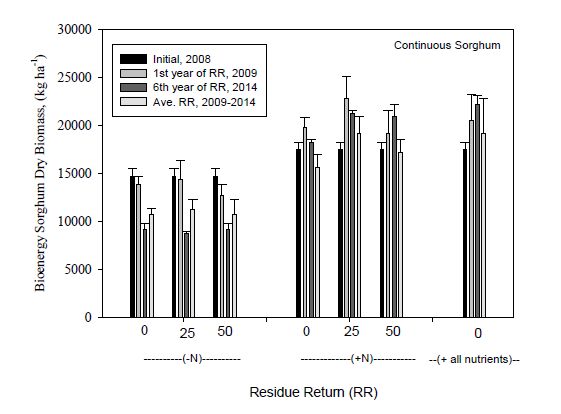
 DownLoad:
DownLoad: 